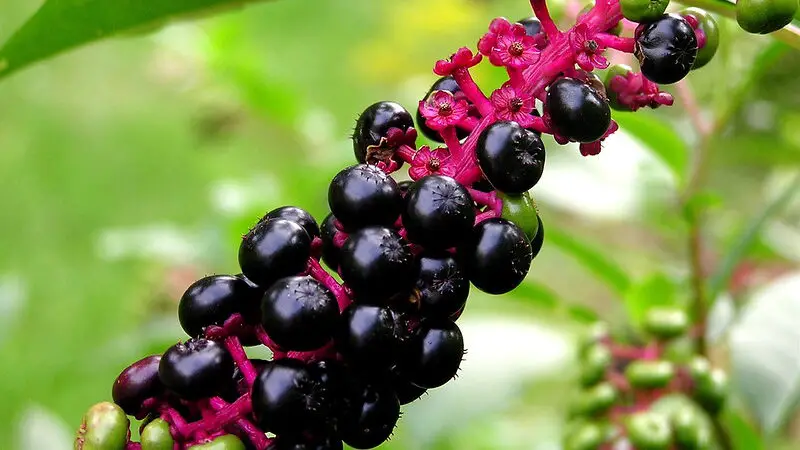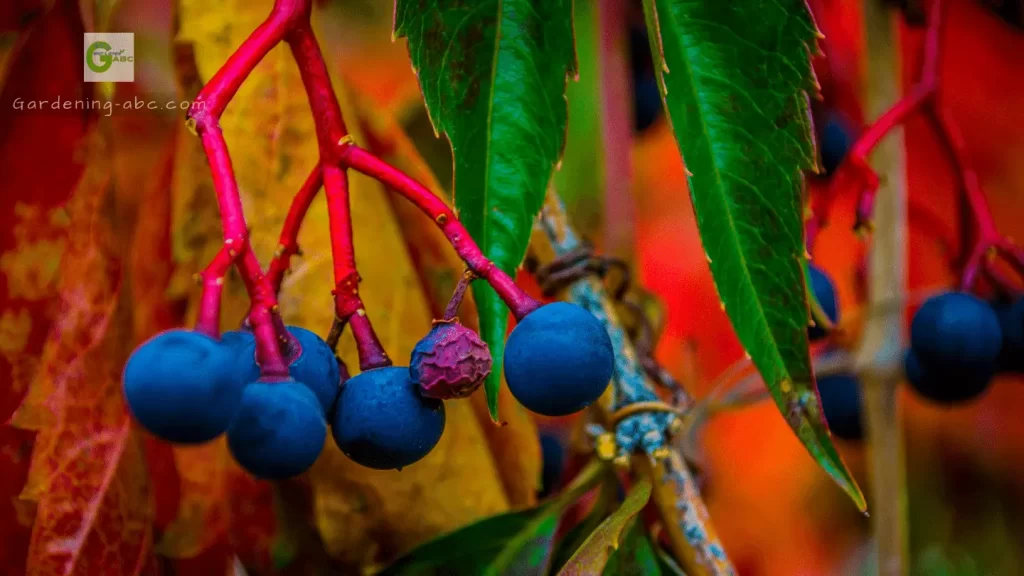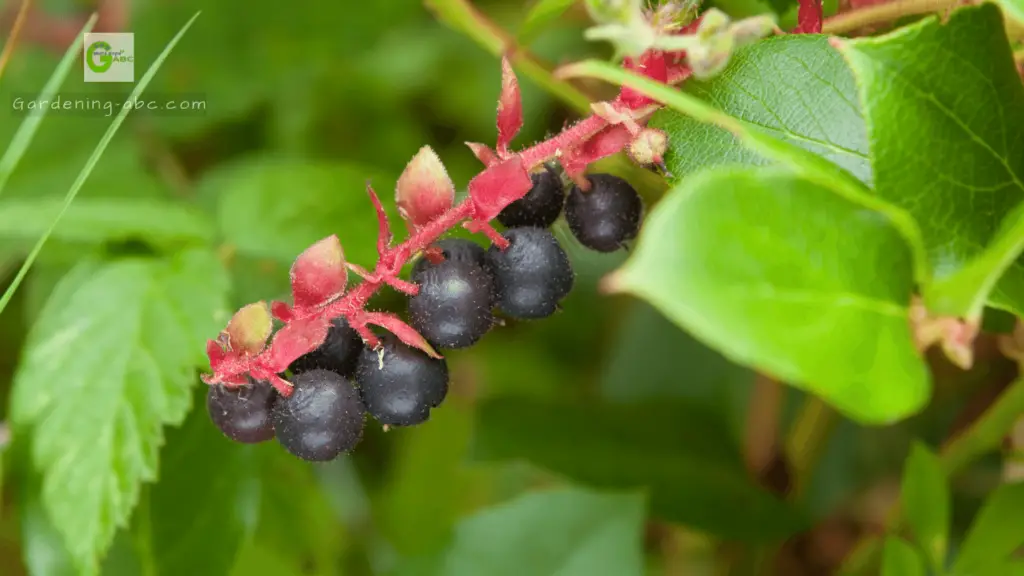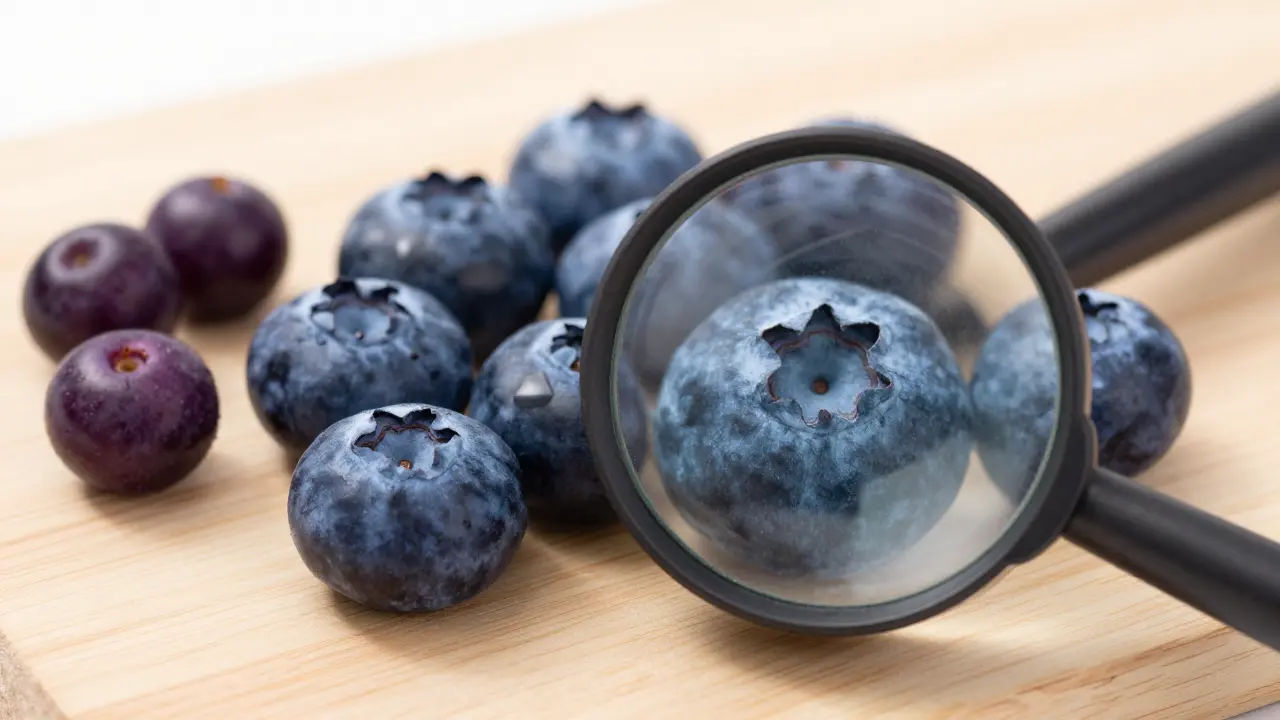We use affiliate links to run our site. When you buy through links on our site, we may earn an affiliate commission, without any added cost to you. Learn more
Blueberries are some of the most delicious and nutritious berries you can eat. They’re packed with antioxidants and have health benefits ranging from cancer-fighting to anti-aging.
Blueberries, strawberries, and cranberries are used in a wide variety of recipes and desserts. But did you know that not all berries are safe to eat?
There are other berries in the wild that look very similar to blueberries. Here in this post, I have outlined six wild berries that look like blueberries but some of them can be poisonous. You should always avoid these poisonous wild berries as these can create problems for you.
Berries are fleshy fruits produced from a single flower with one ovary and typically have several seeds. Blackberries and raspberries aren’t true berries they’re aggregates of many separate little fruits.
Types Of Blueberries:
The blueberry is the most consumed fruit in the United States. Whether you eat them out of hand, bake them into pies, or blend them into smoothies, these berries are packed with nutrients.
Here are some of the most common types of blueberries:
Highbush Blueberries:
This is the type of blueberry that you most likely find in your grocery store. They have been cultivated to be large and sweet. They can be found in both organic and conventional forms.
Lowbush Blueberries:
The lowbush variety is more common in Canada, but can also be found in the wild in Maine. While not as large as highbush, they are sweeter and are used for jams and juices. They are usually picked mechanically because of their small size.
Rabbiteye Blueberries:
This is the largest of the three types of blueberries. It has a unique taste that is not as sweet as highbush or lowbush varieties. You will most likely find this type at a local farm stand or a pick-your-own farm.
What Do Wild Blueberries Look Like?
Wild Blueberries are plentiful, delicious, and nutritious. They can be found in the wild in the northern part of North America, as far north as Alaska, and as far south as Virginia.
The berries are smaller than most cultivated blueberries. They are deep purple when fully ripe, with a whitish-silver frost on the surface. The skin is thinner than that of cultivated blueberries, so they appear slightly translucent.
The thing that distinguishes wild blueberries from lookalike wild berries is that on each berry there is a 5-point crown. You can see this if you look closely at the end of each berry. If you see this crown it means you have found true wild blueberries!
What Berries Look Closely Like Blueberries?
There are many types of berries that are similar to blueberries, Each of them has its own distinct flavor and texture profile, and some are even poisonous.
Poisonous Berries:
Here are the 3 most common poisonous wild berries that look similar to blueberries:
| Name | How to Identify | Uses/Benefits |
| Pokeberries | Smaller size than blueberries, hollow center. | Contains anthocyanin, and can potentially treat cancer cells. Used for dye making and as a coloring agent. |
| Nightshade Berries | Smaller, dark blue with a pointed shape, may have green leaves. | Medicinally used for treating inflammatory issues, poisonous if consumed in large quantities |
| Virginia Creeper Berries | Blueish-black berries on a vine. | Toxicity leading to nausea, dizziness, upset stomach, potential fatality |
1. Pokeberries:

Like blueberries, pokeberries have smooth skins and grow in clusters. Their dark purple or black color is easy to distinguish from the blueberry’s blue-black hue.
Pokeberries are poisonous; indeed, the name “poke” comes from a Native American term for a stew made from their leaves.
2. Nightshades:

Nightshade berries are poisonous and can cause severe nausea, vomiting, and diarrhea, as well as death if consumed in large quantities.
The nightshade family includes several plants that can be mistaken for blueberries if you don’t know what you’re looking for.
The nightshade leaves are pointed and glisten in the sun at all times of the day. The berries themselves look like blueberries at first glance.
3. Virginia Creeper:

Virginia creeper berries closely resemble blueberries in color and size, but you should never consume them.
Virginia creeper is a vine native to eastern and central North America that produces dark purple berries in the fall. While visually similar to edible blueberries, they contain high levels of oxalic acid, making them toxic to humans.
Ingesting Virginia creeper berries can cause a range of symptoms including nausea, vomiting, dizziness, and diarrhea. In rare cases, consuming large quantities of these berries can even be fatal due to their poisonous nature.
Touching the vines and leaves may also cause skin irritation in some individuals.
For these reasons, proper identification is crucial – these above berries should be avoided at all costs, no matter how appetizing they may appear. When in doubt, it’s always better to avoid unknown berries found in the wild.
Other Poisonous Berries:
| The Name of The Berries | How to Identify | Uses/Benefits |
| Mistletoe | White berries with a viscous texture, grows on tree branches | Poisonous if ingested, can cause digestive issues, seizures, and in extreme cases, death |
| Holly Berries | Bright red or sometimes yellow berries, spiky leaves | Toxic when consumed, leading to nausea, vomiting, and stomach pain |
| Pokeweed | Dark purple to black berries, found in clusters on reddish stems | Highly toxic, can cause gastrointestinal distress and potentially be fatal |
| Bittersweet Nightshade | Red to black berries, shiny appearance, found in clusters | Poisonous if eaten, can cause nausea, vomiting, and digestive issues |
| Yew Berries | Reddish berries with a single seed inside, found on an evergreen tree | All parts are toxic, causing cardiac and respiratory failure if ingested |
| Cotoneaster | Small red berries, glossy leaves, grow on shrubs | Berries can cause gastrointestinal upset if ingested |
| Jerusalem Cherry | Small orange berries, resemble cherry tomatoes | Highly toxic, can cause severe stomach issues, and be fatal if ingested in large quantities |
Berries That Are Not Poisonous:
1. Bilberries:

Bilberries closely resemble blueberries but are smaller and have a more tart flavor. They have a deep purple color and also contain anthocyanins, which give them their antioxidant properties.
Use bilberries in jams and preserves, as well as desserts and pastries.
2. Salal Bushes:

Salal berries are similar to blueberries in appearance, although they are larger and are often considered less tasty.
Salal bushes produce bright red berries that look like miniature strawberries or raspberries. The full-sized berries are about 1/3 inch long and grow in small clusters at the ends of the branches. Salal berries are often used in floral arrangements because they last so long after they’re picked.
Salal bushes are also known as Gaultheria shallon. It is a native Northwest evergreen shrub. The leaves of salal are green, shiny, and leathery with serrated edges. The berries are purplish-black in color, round, and very sweet.
Salal is a common plant in the forest and grows in many areas from sea level to timberline. In some areas it is considered an invasive species because it spreads over large areas of forest floor, covering native plants and preventing them from growing.
3. Buckthorn Bushes:

Buckthorn berries, while visually similar to blueberries, taste bitter and will upset your stomach if ingested.
Buckthorn shrubs have small white flowers which grow in clusters, followed by black berries. The leaves are oval and about three inches long. They turn a beautiful yellow in the fall before dropping off for winter.
The bark is thin, smooth, and grey-green on younger twigs, turning brown with age and often covered with small growths called lenticels that allow air to enter the interior of the tree or shrub. Buckthorn trees can grow quite tall, up to 40 feet (12 m).
4. Wintergreens:

Wintergreen produces edible black or red berries that resemble cranberries in taste. The wintergreen plant is common throughout much of the United States, though it’s most prevalent in the north-central states.
It’s a low-growing herbaceous plant that grows well in the understory of deciduous forests. Its leaves have a minty flavor and scent and wintergreen oil is used in many products, including gum and candy. Its bright red berries ripen in late fall and persist through winter.
You can eat both blueberries and wintergreens, but the wintergreen is considered to be more bitter. It’s also much more common in the eastern U.S. and Canada than in the western part of the continent.
Berries Other Than Blueberries:
Although blueberry is one of the most consumed berries in the United States there are many other berries.
Blueberries are just one of many kinds of berries that are grown throughout the world, and many other berries are just as delicious and healthy as these little deep-blue treats.
Some of the most common berries include:
- Cranberries
- Huckleberry
- Chokeberries
- Elderberry
- Gooseberry
- Lingonberry
- Red Currants and
- Black Currants
Delicious Fruits That Are Not True Berries:
Botanically speaking, many so-called berries are not true berries but are instead aggregate fruits, composed of small fruits called drupelets. Other kinds of fruit that meet the culinary definition of “berry” but are not true berries.
Some of the most common examples of fruits that although we call berries are not technically berries are
- Strawberries
- Blackberry
- Red, Black, Golden, and White Raspberry
- Olallieberry
- Mulberry
- Serviceberry (Juneberry)
Exotic Berries:
Exotic berries are a big trend in the superfood world and for great reason. These small fruits are packed full of antioxidants, have anti-inflammatory benefits, and taste delicious.
Some of the most common exotic berries are:
- Açai Berries
- Goji Berries
- Physalis (Cape Gooseberry)
Lesser-known Berries You Can Eat:
Most people know about the strawberry, blackberry, and blueberry, but there are loads of other berries out there!
You can’t beat fresh berries from the local farmer’s market, or even your own backyard in many places.
They have the freshest taste and have so many health advantages like fighting cancer and curing diabetes.
Here are some of them you can try your hands on
- Cloudberries
- Pineberries
- Salmonberry
- Sumac Berries
- Hackberry
- Black raspberries
- Golden raspberries
- White raspberries

Final Takeaway:
When selecting berries to eat fresh or as part of a recipe, be a little cautious. just because they’re blue doesn’t mean you can eat them without thinking twice.
In fact, these 6 berries that look like blueberries but are poisonous look almost exactly the same as blueberries, making them virtually indistinguishable! So be sure to double-check.
Now that you know the difference between blueberries and their impostors, it’s important to remember not to eat any berries unless you are 100% positive about what they are.
If you want to forage for berries, make sure to go with an experienced forager or with a friend who has done so before.
Amazon and the Amazon logo are trademarks of Amazon.com, Inc, or its affiliates.

Hi there! My name is Prasenjit and I’m an avid gardener and someone who has grown a passion for growing plants. From my hands-on experience, I have learned what works and what doesn’t. Here I share everything I have learned.
